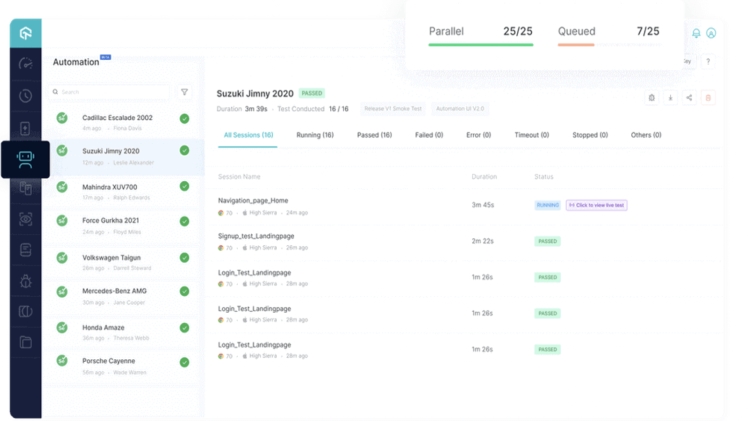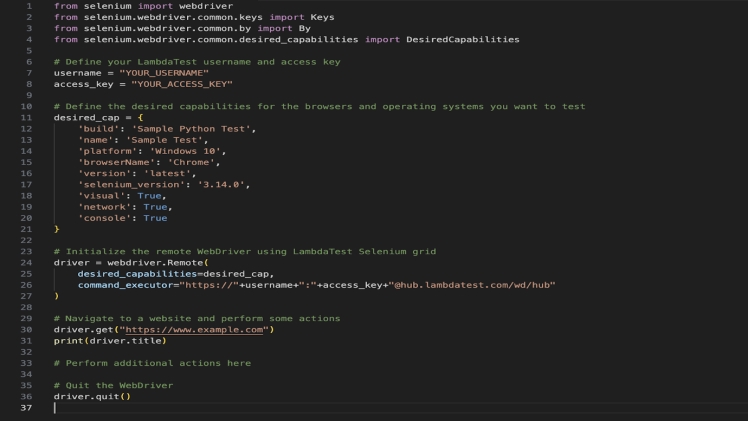In the modern application development process, the development phase, testing phase, and production phases have an equal role in ensuring the quality and efficiency of the overall testing environment. Due to the rising complexity of modern apps, app developers have to give special attention to the testing process. This is because bugs, errors, and failures are some of the most common instances in the testing cycle. However, by using advanced testing processes and efficient debugging steps, the app developers can quickly solve these errors and forward the app towards the production phase. Test automation also has a major role in binding all these parameters. The application developers can also implement other tools, dependencies, and libraries that are targeted towards solving these problems.
So with this article, we are going to explore some of the most important measures that can help control software product failures and testing errors. We will also go through some of the most important practices that can help app developers uplift their product quality and the productivity of the development cycle.
The Modern Software Market and How it is Influenced by Test Automation
In the modern generation, the end users want a compact solution for accessing their apps which include smartphones, tablets, and even smart watches. Moreover, they want a one-stop approach where a single application can serve multiple daily tasks. So, to implement all these changes, the app developers have to introduce various complexities in the code infrastructure. These complexities are the major reason why there are so many failures and errors in the modern application testing process. Moreover, with complete manual testing, the error detection process is not only delayed but also inaccurate in certain cases.
To solve this problem, the developers can integrate test automation in their application development and testing life cycle. With this process, it is possible to automatically initiate and execute the test instances without the involvement of human developers. This is because the system will use an automation test script to receive all the required parameters for communicating with the application like a human user. Although the test scripts are pre-written, the developers have the liberty of making significant changes to customize them according to their project requirements.
The proper implementation of test automation while verifying the performance of complex apps can benefit in the following ways:
- Since it does not involve human developers, it is not only highly accurate but also efficient as it can run 24 hours round the clock even on non-business days. Many experts believe that the adoption of complete test automation can complete thousands of test instances within a few days.
- Test automation is highly efficient when it is combined with repetitive test cases like regression testing and unit testing. The app developers can save a lot of time in this process and use it to create new features for future application updates.
- While using test automation, the testers have the option of integrating dedicated tools and libraries to improve the quality of the apps that are currently being developed.
- Finally, automation testing also has an efficient role in improving the resource and time efficiency of the app-developing company. It contributes to this process where eliminating the requirements for setting up and maintaining a human testing team.
Measuring Software Product Failures and Errors
So to help the new automation testers and developers, we have listed some of the most important practices for measuring software product failures and errors that can hamper the development cycle:
● Implementation of Bug Tracking System
By integrating bug-tracking software with the automation testing environment, the application developers can keep track of all the bugs and errors that might appear in the core infrastructure of the app. Moreover, software like Jira or GitHub can automatically log the errors without any human involvement. They will also track some of the most crucial software defects and issues. Using these tools, the developers can group the bugs based on their category and priority to monitor their status.
● Detecting the Density of Errors
The term defect density measures the total number of defects that appear per unit of code. The application developers can calculate the value of defect density by dividing the total number of defects by the size of the code based on the line of code or function points. So, in case they receive a high defect density, it means that there is also a high error density in the core framework of the application. So, using this parameter, the app developers can reconfigure the entire test suite to make significant changes to make the application more stable and usable.
● Reviewing the Test Code
By reviewing the test code before beginning the execution or the production process, the app developers can get critical bugs and errors at the early stages of the application development life cycle. This process involves having certain peers or team members examine the code for various parameters like maintainability, relativity to coding standards, and collectiveness of the basic code infrastructure. Certain factors in modern codes are often overlooked by automation testing and require the intervention of experienced human testers. In case the app developers are members of an online software testing community, they can release the test code in this community for reviewing and acquiring feedback from all the other members.
● Analysing the Quality of the Static Code
Various static code analysis tools like ESLint or SonarQube are easily available in the market. Using these tools, the developers can automatically identify some of the most important issues like potential errors, security vulnerabilities, and code smells. These errors are often preserved in the source code of the application. Some of the most important apps that can be affected by these errors include e-commerce apps, health apps, and banking apps. In this regard, we would also advise the developers to download all the dependency and testing tools from the official website to avoid any malicious attacks.
● Rating as Per Severity and Priority
As we all know, all the bugs and errors in a software development process do not have the same priority based on the basic functioning of the application. So, the developers need to sort the errors based on their priority and severity. After the sorting process, they can ensure that proper attention is given to the severe problems so that they can be solved as soon as possible. By implementing this process, the developers can ensure that at least the basic structure of the application is functional in all instances.
● Implementation of Regression Testing
Modern applications go through frequent changes to add new features or fix previous errors. It is a common error that the new features can harm the functioning of the previously present elements. So by performing regression testing, the developers can test the integrity of the app and eliminate this possibility.
● Collecting User Reports and Support Tickets
In case the app developers are performing the debugging process on an app that has been already released to the end users, they need to properly monitor the user feedback and support tickets. This is because it will provide important information about some of the common errors that the users have been facing with that app. After creating patterns in user-reported problems, the developers can easily highlight the areas of the software that need special attention or are prone to errors.
● Analyzing the Historical Data
The historical data of an application provides vital information about some of the critical bugs and errors that have been detected in the previous versions of the app. Some cloud platforms like LambdaTest maintain test logs for storing important data regarding previously present errors and bugs. So, the app developers can use this reference to avoid such errors in the present or future testing instances.
Revolutionising Test Automation with LambdaTest
Cloud platforms have a critical role in improving the efficiency of modern testing solutions. For instance, cloud platforms allow the execution of real device testing without a physical device testing lab. This is because, with these platforms, the developers can access all the required real devices through multiple remote servers using the Internet. Cloud platforms like LambdaTest have access to thousands of real devices using its cloud infrastructure. The LambdaTest platform also uses artificial intelligence to initiate and execute the automation test cases. It combines the test reports from real devices with emulation software for improved efficiency and accuracy.
The integration of LambdaTest API with the LambdaTest real device testing cloud boosts modern app testing in the following ways:
- It not only provides access to thousands of modern devices but also legacy browser and device versions for improved app compatibility.
- While using LambdaTest for automation testing, the developers can import the test cases from various popular frameworks like Selenium, Appium, Cypress, and even Playwright. LambdaTest has native support for initiating the Selenium test cases on more than 3,000 browser versions.
- LambdaTest also provides support for natively initiating automated cross-browser testing using the Selenium WebDriver and the Selenium grid. To simplify this process, we have mentioned the required code snippet below:
- It can run multiple test instances on different configurations and testing machines simultaneously using the features of parallel test execution.

- LambdaTest provides dedicated support for bug tracking features that help the developers keep track of all the bugs, errors, and software failures during the test execution process.
- After executing the test cases, LambdaTest will generate a detailed test report consisting of vital information like live test activity logs, screenshots, and videos. Using all these elements, the testers can perform the required debugging process on the targeted elements of the app.

- In case the developers need additional support regarding the tools and features of LambdaTest, they can refer to the official documentation on the website. They also have one-to-one support systems like live chat, mailing feature, and over-the-phone support. Finally, the developers and testers also have the option to discuss among themselves various features and issues using the open-source LambdaTest community.
The Conclusive Views
All the methods that we listed in this article will help the testers to easily measure the software failures and errors during the automated software test cases. It is also important to adopt all the recent trends and innovations in the segment of automation testing so that the developers can keep up to date with the market standards. Gathering adequate information about the requirements of end users will also help the developers and testers customize their apps to improve and increase their audience reach. Practices like these are crucial for maintaining a positive image for the brand and staying ahead of the competition in this competitive segment.

